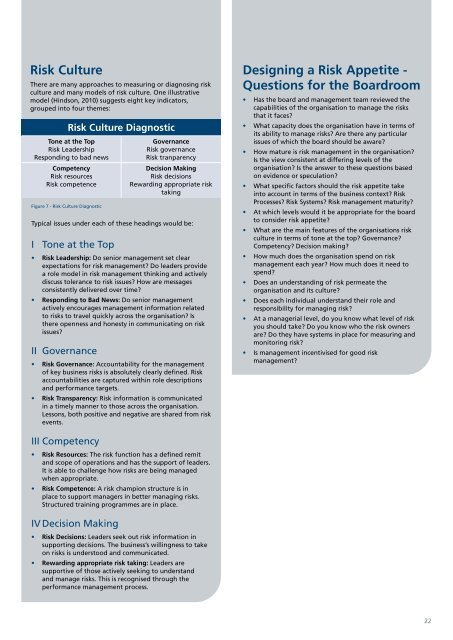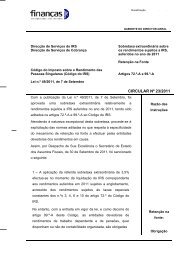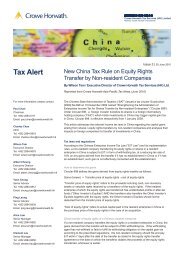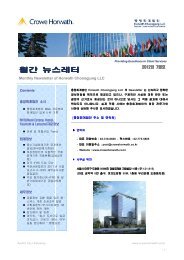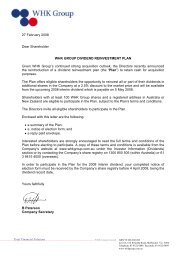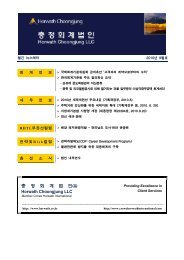Guidance Paper - The Institute of Risk Management
Guidance Paper - The Institute of Risk Management
Guidance Paper - The Institute of Risk Management
You also want an ePaper? Increase the reach of your titles
YUMPU automatically turns print PDFs into web optimized ePapers that Google loves.
<strong>Risk</strong> Culture<br />
<strong>The</strong>re are many approaches to measuring or diagnosing risk<br />
culture and many models <strong>of</strong> risk culture. One illustrative<br />
model (Hindson, 2010) suggests eight key indicators,<br />
grouped into four themes:<br />
Figure 7 - <strong>Risk</strong> Culture Diagnostic<br />
Typical issues under each <strong>of</strong> these headings would be:<br />
I Tone at the Top<br />
• <strong>Risk</strong> Leadership: Do senior management set clear<br />
expectations for risk management Do leaders provide<br />
a role model in risk management thinking and actively<br />
discuss tolerance to risk issues How are messages<br />
consistently delivered over time<br />
• Responding to Bad News: Do senior management<br />
actively encourages management information related<br />
to risks to travel quickly across the organisation Is<br />
there openness and honesty in communicating on risk<br />
issues<br />
II Governance<br />
<strong>Risk</strong> Culture Diagnostic<br />
Tone at the Top<br />
<strong>Risk</strong> Leadership<br />
Responding to bad news<br />
Competency<br />
<strong>Risk</strong> resources<br />
<strong>Risk</strong> competence<br />
Governance<br />
<strong>Risk</strong> governance<br />
<strong>Risk</strong> tranparency<br />
Decision Making<br />
<strong>Risk</strong> decisions<br />
Rewarding appropriate risk<br />
taking<br />
• <strong>Risk</strong> Governance: Accountability for the management<br />
<strong>of</strong> key business risks is absolutely clearly defined. <strong>Risk</strong><br />
accountabilities are captured within role descriptions<br />
and performance targets.<br />
• <strong>Risk</strong> Transparency: <strong>Risk</strong> information is communicated<br />
in a timely manner to those across the organisation.<br />
Lessons, both positive and negative are shared from risk<br />
events.<br />
Designing a <strong>Risk</strong> Appetite -<br />
Questions for the Boardroom<br />
• Has the board and management team reviewed the<br />
capabilities <strong>of</strong> the organisation to manage the risks<br />
that it faces<br />
• What capacity does the organisation have in terms <strong>of</strong><br />
its ability to manage risks Are there any particular<br />
issues <strong>of</strong> which the board should be aware<br />
• How mature is risk management in the organisation<br />
Is the view consistent at differing levels <strong>of</strong> the<br />
organisation Is the answer to these questions based<br />
on evidence or speculation<br />
• What specific factors should the risk appetite take<br />
into account in terms <strong>of</strong> the business context <strong>Risk</strong><br />
Processes <strong>Risk</strong> Systems <strong>Risk</strong> management maturity<br />
• At which levels would it be appropriate for the board<br />
to consider risk appetite<br />
• What are the main features <strong>of</strong> the organisations risk<br />
culture in terms <strong>of</strong> tone at the top Governance<br />
Competency Decision making<br />
• How much does the organisation spend on risk<br />
management each year How much does it need to<br />
spend<br />
• Does an understanding <strong>of</strong> risk permeate the<br />
organisation and its culture<br />
• Does each individual understand their role and<br />
responsibility for managing risk<br />
• At a managerial level, do you know what level <strong>of</strong> risk<br />
you should take Do you know who the risk owners<br />
are Do they have systems in place for measuring and<br />
monitoring risk<br />
• Is management incentivised for good risk<br />
management<br />
III Competency<br />
• <strong>Risk</strong> Resources: <strong>The</strong> risk function has a defined remit<br />
and scope <strong>of</strong> operations and has the support <strong>of</strong> leaders.<br />
It is able to challenge how risks are being managed<br />
when appropriate.<br />
• <strong>Risk</strong> Competence: A risk champion structure is in<br />
place to support managers in better managing risks.<br />
Structured training programmes are in place.<br />
IV Decision Making<br />
• <strong>Risk</strong> Decisions: Leaders seek out risk information in<br />
supporting decisions. <strong>The</strong> business’s willingness to take<br />
on risks is understood and communicated.<br />
• Rewarding appropriate risk taking: Leaders are<br />
supportive <strong>of</strong> those actively seeking to understand<br />
and manage risks. This is recognised through the<br />
performance management process.<br />
22


